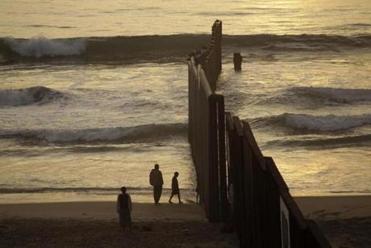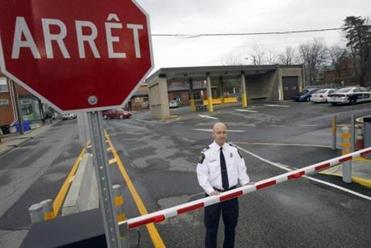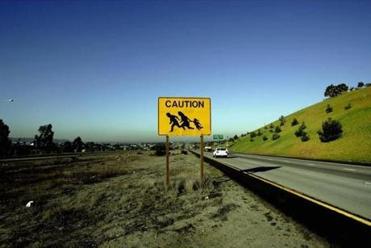Sounds like a description of the British Empire's foreign imperialistic dealings in India, China, South Africa, America, and everywhere else the sun didn't set where the British flag was being flown for over 100 years. One should be careful to only view the world through one set of European or British centrist lens that they become blind to their own nationalistic faults as well. But if one is of feeling a superiority complex toward another group of people probably doesn't matter to them anyway.
British centrist lens?????? Britain isn't the EU. The EU is a collective of countries under one flag so to speak. Its their policies and Governance that have allowed the British to overwhelmed by the small minded meddling of the EU short sighted egotistics and clueless politicians.
I suggest you read this as it shows your thoughts on the British is out of date and a little blinkered concerning immigration.
 Adjust Font
Adjust Font |
Print |
RSS |
Reprint Permission
10
United Kingdom: A Reluctant Country of Immigration
July 21, 2009
Profile
By Will Somerville, Dhananjayan Sriskandarajah, Maria Latorre
Southall, in the London Borough of Ealing, has a large South Asian community. The United Kingdom had about 6.9 million foreign born in 2008.
Immigration to the United Kingdom in the 21st century is larger and more diverse than at any point in its history. As the global recession bites, early evidence shows a reduction in the numbers of immigrants coming to work. However, fundamental dynamics indicate sustained net immigration is here to stay.
Although the United Kingdom has received immigrants for centuries, the country has traditionally been a net exporter of people; only from the mid-1980s did the United Kingdom become a country of immigration.
The last decade nevertheless differs markedly because of high levels of net immigration, a surge generated in large part by sustained economic growth for the last 15 years. Since 2004, immigration levels have been boosted by an extraordinary wave of mobility from Eastern European countries, particularly Poland, whose citizens have free movement and labor rights following European Union (EU) enlargement.
Public anxiety about immigration, fueled by media attention, has risen in parallel to the numbers. Monthly polling data from the IpsosMORI agency shows that beginning in the late 1990s, people identified race and immigration as one of the top three most important issues facing the country for all but a couple of months.
Opinion polling data from different sources shows a similar picture, with between two-thirds and four-fifths of the public indicating a preference for less immigration.
In this context of rising numbers and rising anxieties, UK policymakers have attempted to draw up policies to manage migration. They have responded imaginatively, implementing a Points-Based System for Migration and new institutional arrangements, for example. But they continue to face a complex set of challenges — from securing borders and convincing the public that government is in control to meeting labor market needs and accelerating immigrant integration.
Historical Background
After World War II, two contrasting trends changed the nature of UK immigration. First, Irish nationals and the countries of the United Kingdom (England, Scotland, and Wales) have consistently enjoyed free movement and settlement rights.
Similarly, as the United Kingdom has deepened its ties with European partners, mostly through what is now the European Union, Europeans have enjoyed free movement and exemption from UK immigration control.
Second, nationals of many other countries, particularly former British colonies like India and Jamaica, have had their access to the United Kingdom progressively eroded.
These trends did not happen immediately after the war. Immigration policy remained embedded in the structures and systems of the British Commonwealth (also known as the British Empire) until the 1960s, with Commonwealth citizens guaranteed the right of entry.
The high watermark of this approach was the British Nationality Act of 1948, which tried to assert Britain's role as leader of the Commonwealth and affirmed the right of Commonwealth citizens (including those of newly independent Commonwealth countries like India) to settle in the United Kingdom.
The Postwar Policy Model
The British Nationality Act was a sandy edifice against the tides of change that broke the British Empire apart. Instead, a new migration policy emerged based on two pillars: limitation and integration.
Limitation followed immigration flows of workers from Commonwealth countries in the 1950s and early 1960s. The three laws that make up this pillar together had the goal of "zero net immigration." The relevant laws were enacted in 1962, 1968, and 1971.
The 1971 Immigration Act, with a few minor exceptions, repealed all previous legislation on immigration. It still provides the structure of current UK immigration law, which accords the Home Secretary with significant rule-making powers on entry and exit.
The core of the legislation was strong control procedures, which included new legal distinctions between the rights of the UK born/UK passport-holders and people from former British colonies — notably India, Pakistan, and the Caribbean — who became subject to immigration controls.
The second pillar, integration, was inspired by the U.S. civil rights movement. The approach mainly took the form of antidiscrimination laws: in a limited form in the 1965 Race Relations Act, in an expanded form in the 1968 Race Relations Act, and in a more comprehensive form in the 1976 Race Relations Act.
The Conservative Era
From 1979 to 1997, policy continued on much the same track, albeit with a stronger emphasis on limitation and restriction. The British Nationality Act of 1981 ended centuries of common-law tradition by removing the automatic right of citizenship to all those born on British soil, for instance.
The target of policy changed from the late 1980s onwards, when asylum-seekers became the greater concern. The fall of the Berlin Wall in 1989 and the breakup of the Soviet Union — together with conflicts in the former Yugoslavia in the early 1990s — led to increased humanitarian flows to the United Kingdom and other European countries. Policymakers, unused to flows of asylum seekers, began to legislate change.
Two major Acts of Parliament encapsulated the changes. The 1993 Asylum and Immigration Appeals Act was restrictive, creating new "fast-track" procedures for asylum applications, allowing detention of asylum seekers while their claim was being decided, and reducing asylum seekers' benefit entitlements.
The 1996 Immigration and Asylum Act continued in the same vein with new measures and concepts designed to reduce asylum claims, such as further welfare restrictions.
Immigration Policy since 1997
When the Labour party came to power in 1997, migration policy shifted course.
The direction of policy has been one of "selective openness" to immigration, with a commitment to economic migration on one hand and development of a tough security and control framework on the other. The change in economic migration has been accepted across the political divide, and, consequently, limiting and restricting immigration is no longer a prerequisite for UK migration policy.
The security approach, which accelerated after the September 11, 2001, attacks in the United States, has been built on greater efforts to combat illegal immigration and reduce asylum seeking through various measures, but especially new visa controls.
In addition, the Labour government has also altered the second postwar pillar of integration. Labour has reinforced antidiscrimination measures under an agenda of equality and has developed ideas and policies around "community cohesion," which roughly means bringing together segregated communities and fostering shared values and belonging.
In order to make such changes, Labour has passed six major pieces of legislation on immigration and asylum over the last 12 years, alongside a number of policy strategies (see the Table 1 in
The Immigration Legacy of Tony Blair).
The benefit of hindsight suggests that legislation in 2002 was a turning point. The government expanded economic immigration and, for the first time, introduced visas for highly skilled economic immigrants to come to the United Kingdom without a job offer, but simply on the basis of their skills.
However, many changes, some not immediately of great import, together have fundamentally altered how government approaches immigration.
Among these are policies to encourage international students, new labor market programs that have culminated in the development of a Points-Based System, and above all the government's decision to allow labor market access to citizens of a newly enlarged Europe.
By tightening up visas, the government has built a more restrictive framework for asylum seekers and illegal immigrants. Reinforcing this framework are institutional changes, especially the creation of an enlarged arm's-length agency, the UK Borders Agency (UKBA), which has greater powers than its predecessor, the Immigration and Nationality Directorate (IND).
UKBA encompasses visa responsibilities from the Foreign Office and detection responsibilities from Customs, and has greater operational freedom than IND had.
Recent Immigration Flows
The policy changes described above have affected the flows and patterns of immigration, both reactively (e.g., on asylum) and proactively (e.g., on Eastern European migration).
In 2007, the United Kingdom received a gross flow of 577,000 people and a net flow of about 237,000. Net immigration contributed 1.8 million people to the UK population from 1997 to 2007 (see Table 1).
This 1.8 million figure is comprised of growing numbers of workers, international students, asylum seekers (applications spiked between 2000 and 2002), and family members reunifying with those already in the country.
Throughout this period, both the inflow of non-British nationals and the outflow of British citizens (mainly to Australia and Spain) have risen. Consequently, since the mid-1990s, net immigration has exceeded 100,000 people per year, and in some years since 2000, has exceeded 200,000 (see Figure 1).
Table 1. Migration to Britain, 1997 to 2007
British Non-British Total
Gross immigration 1,054,000 4,412,000 5,466,000
Gross emigration 1,867,000 1,747,000 3,614,000
Net migration -813,000 2,665,000 1,852,000
Note: Numbers may not round; minus sign refers to net outflow and plus sign refers to net inflow.
Source: Total International Migration, Office for National Statistics, 2008.
UK Immigrant Population
The sustained inflows of immigrants have resulted in increases in the United Kingdom's stock of foreign born and foreign citizens; the latter group has nearly tripled in size since the early 1980s. The current picture shows that the United Kingdom had about 6.9 million foreign born in 2008, 11 percent of its population, and 4.4 million foreign citizens, about 7 percent of the population. The latter figure is lower primarily because of naturalizations.
The five largest foreign-born populations were from India (639,000), Poland (526,000), Pakistan (436,000), Ireland (424,000), and Germany (293,000).
Yet the Polish are the United Kingdom's largest foreign-national group. According to the Labor ******* Survey (LFS), in the fourth quarter of 2008, 522,000 Polish nationals were living in the country. The next-largest groups were from Ireland (355,000), India (307,000), Pakistan (202,000), France (133,000), and the United States (127,000).
The rankings differ because EU citizens are less likely to apply for British citizenship.
The key analytical point remains the increasing diversity of immigrants to the United Kingdom. Many have come from European countries and former settler colonies, such as Canada, Australia, and New Zealand, while immigration from India, Pakistan, Bangladesh, the Caribbean, and African countries including Ghana, Kenya, Nigeria, and Uganda have continued.
Recent asylum and refugee inflows from other parts of the world (notably Somalia, Afghanistan, China, and Iraq) have contributed to increasing ethnic diversity. It is therefore unsurprising that diversity has grown (see Table 2).
Table 2. Britain's Growing Ethnic Diversity, Various Years
1991 2001 2008 2008
Percent total population Percent total population Percent total population Percent population under age 16
White 94.1 91.3 89.9 80.9
Mixed n.a. 1.3 1.1 2.8
Asian 3.3 4.4 4.9 7.2
Black 1.9 2.2 2.3 3.6
Chinese 0.3 0.4 0.4 0.3
Other 0.6 0.4 1.4 1.7
Sources: 1991 and 2001 are decennial census data for England and Wales; 2008 data are for England, Wales, and Scotland from Platt (2009).
A second characteristic of the UK immigrant population is its transience. Research has found that about 40 percent of male immigrants and 55 percent of female immigrants who arrived in the early 1990s and stayed for at least a year returned home within five years. These percentages have likely increased since the beginning of large-scale immigration from Eastern Europe.
Economic Migration, Enlargement, and the Recession
The United Kingdom, until it hit the wall of the global recession, enjoyed high growth, low unemployment, and large numbers of unfilled job vacancies. Consequently, significant numbers of foreign workers filled the gap. Foreign-born workers from different entry categories made up more than 13 percent of the country's labor ******* in 2008 — up from 7 to 8 percent a few decades ago (see Figure 2).
Figure 2. Share of Immigrants in the UK Working-Age Population
Source: Labour ******* Survey and authors' calculations.
In response to public and media disquiet over such high levels of economic migration, the government introduced a new approach in 2008 that it first announced in 2005: a Points-Based System (PBS) incorporating revised and consolidated versions of existing labor migration schemes.
PBS has five tiers. Tier 1 is aimed at the highly skilled and does not require a job offer. Instead, it is based on applicants' skills and characteristics for which points are awarded. Points allocations show a strong commitment to youth and to certificated qualifications.
Tier 2 incorporates the main body of the work permit system and offers entry to those with a confirmed job offer in a sector of labor market shortage. Such shortage is designated by an independent, new body — the Migration Advisory Committee — that provides the government with nonbinding advice on areas of labor market shortage. It is expected that Tier 2 will account for the majority of non-EU economic migrants.
In 2006, around 141,000 work permits were issued. The leading source country was India, with over a third of all work permits. One in 10 came from the United States, the next biggest source country for work permits. Approximately half of work permit holders come to take up jobs in professional occupations.
The government envisages Tier 3, aimed at filling "lower-skill" jobs, as a highly restricted migration route. This route has been suspended indefinitely because of intra-EU migration; indeed, all low-skilled migration schemes, such as the Seasonal Agricultural Workers Scheme (SAWS), have been slated for closure.
Tier 4 is dedicated to student visas. It differs from the previous system by compelling colleges and universities to act as "sponsors" for which they must undertake obligations, such as checking student attendance.
Tier 5 is aimed at a variety of exchange programs including five subcategories under temporary workers and a youth mobility scheme.
PBS makes the route to permanent settlement open only to those from Tiers 1 and 2. Lower-skilled workers will not be eligible; instead the country will rely on workers from the European Union.
Overall, with its focus on points and sponsors, policy has moved away from an employer-led system to one that is increasingly government led and more focused on control.
It is important to point out that PBS has no control over intra-European movement — yet the most dramatic increase in economic migration in living memory came from Europe.
When eight Eastern European countries joined the European Union in May 2004, the United Kingdom, along with Ireland and Sweden, allowed nationals from these new Member States to work without any restrictions; this group of countries is known as the accession eight or A8. Nationals of Romania and Bulgaria, which joined the European Union in 2007, face restrictions.
The booming UK economy proved an attractive destination for many A8 citizens. Together with restrictions elsewhere in Europe, high unemployment at home, favorable exchange rates, and pent-up demand, a wave of immigration was unleashed.
About 1.3 million people from the A8 arrived in the United Kingdom between May 2004 and May 2009. Analysts estimate about half left by the end of that period. The sheer size of the inflow has meant that Polish nationals, despite the high churn, jumped from being the United Kingdom's 13th-largest foreign-national group at the end of 2003 to number one by the end of 2008.
Eastern European migrants have worked mainly in low-paid jobs in sectors such as hospitality and catering, administration, and construction. In 2008, only 12 percent of Eastern European immigrants worked in highly skilled occupations, and more than half worked in "routine" ones.
The full effect of the current recession on economic migration from Eastern Europe will not be clear for some time.
However, some preliminary trends can be established. Data from the Worker Registration Scheme (which gives an indication of the number of arrivals from the A8) shows a substantial drop-off in applications. The number of approved applications in the first quarter of 2009 was the lowest since EU enlargement in 2004 and represented a drop of 53 percent from one year earlier (see Figure 3).
Figure 3. Number of Initial Work Applications from A8 Immigrants, 2004 to 2009
Source: Home Office et al., various years.
Evidence from past recessions suggests some changes in certain categories of immigration during a downturn, but overall flows do not seem highly responsive to the economic cycle or to changes in unemployment.
Historically, inflows have declined more than outflows have increased during periods of high unemployment. Econometric analyses confirm this pattern. The analyses show that trends in unemployment and relative income (of source and host countries) had only a modest impact on net immigration to the United Kingdom.
Other factors, such as the level of inequality relative to source countries, immigration policies, and the size of the migrant community from a given source country (a predictor of future family reunification flows), had significantly greater influence over the volume of net migration.
Thus, the recession appears unlikely to have major impacts on future flows of immigrants. A temporary blip in volume is more likely than a permanent adjustment, although immigrants from the A8 countries and immigrants coming under Tier 2 (which requires a job offer) will be affected most; the inflow of A8 nationals in particular may not fully recover.
Asylum Numbers
The United Kingdom received between 20,000 and 40,000 asylum applications per year in the early and mid-1990s, a time when Germany saw hundreds of thousands of applications from people fleeing war in the former Yugoslavia. The numbers rose rapidly in the late 1990s, peaking in 2002 (see Figure 4).
Not including dependents, the United Kingdom received 15.2 percent of the worldwide total of 555,310 asylum applications in 2002, more than any other country, according to the United Nations High Commissioner for Refugees.
Figure 4. Number of Asylum Applications (Excluding Dependents) Received in the United Kingdom, 1997 to 2008
Source: Home Office, various years.
The increase in 2002 partly reflected major conflicts and persecution as claims worldwide jumped. That year, the main origin countries of asylum applicants were Iraq (4,375), Zimbabwe (2,750), Somalia (1,835), Afghanistan (1,350), and China (905).
The Sangatte crisis (where prospective asylum seekers massed at the French Port of Calais, a short journey through the Channel Tunnel to the British city of Dover) provided a media staple of a chaotic scene at the border: desperate young men regularly attempting to enter the United Kingdom.
As numbers rose and the "Sangatte crisis" framed the issue, public pressure to curb asylum seekers grew. The government subsequently passed successive pieces of legislation aimed at "pressing down" the number of asylum applications, as well as speeding up processing and achieving more effective removals (deportations) of failed asylum seekers (i.e., those who had not been granted refugee status after the appeals process had concluded).
Effective policy measures included tougher visa regimes; financial penalties on air and truck carriers; juxtaposed controls at various European ports (e.g., when British border guards are physically stationed in Calais, with immigration powers, and vice versa); and British immigration liaison officers posted abroad. The measures, when taken together, can best be described as expanding the UK border.
A combination of such measures and a worldwide drop in asylum claims (now on the upturn) reduced the number of people claiming asylum. Applications totaled 30,545 (including dependents) in 2008 and came mainly from those fleeing Afghanistan (14 percent), Zimbabwe (12 percent), Eritrea (9 percent), Iran (9 percent), Iraq, (7 percent), and Sri Lanka (6 percent).
Probably less effective in curtailing claims, but intensely consequential to asylum-seeking communities, have been policy moves to reduce access to benefits and the labor market, increase surveillance and detention, and ******* relocation outside of London in a policy known as "dispersal."
For example, as of 2002, asylum seekers are not permitted to work; they receive social benefits at levels below those accorded to British citizens and legal residents with entitlement. To be eligible for government-funded housing, they must accept dispersal outside of London. Over 100,000 asylum seekers have been relocated so far, typically placed in cheap housing in deprived areas.
Furthermore, there has been a steady rise in asylum seekers in detention centers. Over the last five years, there has been an average number of 1,453 asylum seekers in detention per year.
The number of asylum claims has dropped, but these latter measures have come at the expense of social cost and disruption. There is widespread destitution among some asylum-seeking groups, and a range of nongovernmental organizations (NGOs) are troubled by various aspects of their lives and government treatment.
For example, NGOs have raised concerns over asylum seekers' employment and access to quality housing, health, and education. They have also campaigned vigorously against several aspects of asylum-seeker hardship, including detention — particularly of children and families — destitution, and access to justice.
Asylum seeking and concerns over illegal migration are inextricably bound up in UK policy. The question of illegal immigration climbed the policy agenda at much the same time and was often deliberately conflated.
The issue received distinct national attention in 2000, when 58 Chinese people died while locked in the back of a truck en route to the United Kingdom. The national consciousness was again punctured in 2004 with the deaths of 22 Chinese cockle pickers at Morecambe Bay in northwest England, an event that pressured Parliament into passing legislation regulating gangmasters (employers who hire and deploy short-term agricultural workers).
The Gangmasters Licensing Authority (GLA), the body tasked by Parliament to reduce exploitation, was established in 2005. But GLA works only within certain labor market sectors, namely the agriculture and fish-processing industries.
Illegal Migration and Policy
Estimates of the illegal immigrant population vary. The only officially commissioned estimate, and the one most widely accepted, was published in 2005.
The report estimated the size of the illegally resident population at 430,000, based on census data from 2001. That number is about 9 percent of the 4.9 million foreign born in 2001 and less than 1 percent of the total UK population.
A more recent report from the London School of Economics, using a similar methodology but based on figures through the end of 2007, estimates a higher figure of 618,000 illegal residents, with a range between 417,000 and 863,000. London has about 70 percent of this total, with a central estimate of 442,000 and a range between 281,000 and 630,000.
Government policy on illegal migration has developed incrementally since 2002. In addition to external measures, such as tougher visa regimes, the government has also developed internal measures to combat the problem. These measures can be loosely categorized into four areas: identity management, increased employer compliance, more public service compliance, and regularization.
First, in response to September 11 and for other security concerns, the government introduced compulsory biometric identification data for all migrants who intend to stay in the country for longer than six months.
The rollout for "Biometric Identity Cards" for all non-EU foreign residents began in November 2008 for certain foreign students and expanded in March 2009 to other visa categories. By April 2011, it is expected to cover all those coming from outside the European Union.
Though these measures have controversial civil-liberties implications, the government has argued they reduce the scope for illegal entry and working and that more secure identity documents will prevent the entry of people who may pose a security threat.
Second, the government has imposed increasing sanctions on those who employ unauthorized workers. New legislation has allowed fines of 5,000 pounds sterling ($7,500) per illegal employee to be levied on employers, for example. Research suggests that the number of civil penalties (91 firms in the six months through September 2008) has increased.
The third category in the government's effort to reduce illegal immigration has been compliance measures placed on public service providers. Restrictions have been placed on access to nonemergency health care, for example.
Similarly, schools have been asked to check the status of children and report those not legally resident to the immigration authorities although the United Kingdom guarantees the right of all children, illegally resident or not, to attend public school.
Finally, through administrative changes and ad hoc decisions, the government has regularized between 60,000 to 100,000 people over the last decade. Those regularized have tended to be in the country for 13 years or more (seven if in a family), and have often made asylum claims that have not been resolved.
The effectiveness of such measures is difficult to judge given the nature of the issue. However, with a mass amnesty unlikely, illegal immigration is likely to dominate much of the UK migration debate in the future.
Multiculturalism, Integration, and British Muslims
Over the last five years, the United Kingdom has seen significant debate about the multicultural or race relations model of immigrant integration, which has come under sustained criticism, including from within government.
It is first worth describing the "multiculturalist" or "race relations" model, for which the United Kingdom has been known. The classic definition of this model comes from the 1970s Home Secretary Roy Jenkins, who described it as "not a flattening process of assimilation but equal opportunity accompanied by cultural diversity in an atmosphere of mutual tolerance."
In practice, this meant new antidiscrimination laws and some enforcement and promotion work — especially the creation of an independent, publicly funded body, the Commission for Racial Equality (CRE), which combined both unique enforcement functions and a promotional role of encouraging "good race relations."
The kindling for the change in mood dates to 2001 when three events shook official policy: riots involving minority communities in the northern towns of Bradford, Burnley, and Oldham; the peak of the Sangatte refugee crisis; and the September 11 terrorist attacks.
The next stage in altering entrenched multiculturalist policies occurred when the July 7, 2005, attacks on London's transit system led to concerns about white and minority ethnic and religious groups (especially Muslims) leading segregated lives.
In parallel, rising support in some areas for far-right political parties like the British National Party (BNP), which saw two of its most high-profile members elected in to the European Parliament in June 2009, further heightened concern about attitudes toward diversity, immigration, and race.
Thus over the last five years, there have been passionate debates about national identity and concerns over radicalization in Muslim communities. This has led to four semidistinct strands of policy: refugee integration policy; community cohesion; active promotion of citizenship; and a strong and broad emphasis on equality.
Until recently, formal "integration" policy concerned settlement services for recognized refugees. The refugee integration strategy — first introduced in 2000 and strengthened in 2005 — makes refugees eligible for orientation services and some financial assistance for integration.
Community cohesion is concerned with bringing (segregated) communities together through a variety of local level initiatives, such as school twinning projects, which encourage education and pastoral links between schools with ethnically different student bodies, and mixed-housing policies. Unsurprisingly, questions remain as to whether the promotion of "cohesion" is an appropriate way to accommodate social and cultural differences.
The promotion of citizenship has involved "activating" the naturalization process through new citizenship tests, language tests (also mandatory for long-term residence), and citizenship ceremonies.
The Borders, Citizenship and Immigration Bill 2009, currently going through Parliament, seeks to create a year-long "probationary citizenship" stage under which migrants would not be able to pass until they successfully meet such integration criteria as proven English language ability. Achieving full citizenship could be accelerated by other acts, such as volunteering.
Finally, major equal opportunity measures introduced under Labour have reinforced and extended the antidiscrimination framework. The 1998 Human Rights Act enshrined the European Convention on Human Rights (ECHR) into UK law. The 2000 Race Relations (Amendment) Act aimed to eradicate institutionalized racism by obligating certain public authorities, including the police and immigration services, to take action to correct ethnic inequalities in recruitment, employment, and service delivery.
Most recently, the government has begun to address immigrant incorporation more directly. In 2008, the Department of Communities and Local Government published a nascent national immigrant integration strategy that complements the existing strategy for refugees.
This move away from multiculturalism toward "shared values" does not indicate a wholesale regression to the acculturation overtures of a previous generation. Further, this is not simply rhetorical, as the implementation of equality measures makes clear.
The exception to this picture may involve the treatment of British Muslims, estimated at 2.4 million in 2008 according to the Labour ******* Survey.
On the one hand, concerns over segregation and radicalization have led the government to expand the equality agenda. The Racial and Religious Hatred Act 2006, which has had important symbolic value, made it illegal to stir up hatred against persons on racial or religious grounds.
On the other hand, much of the increased attention to Muslim populations falls explicitly under the heading of "preventing extremism."
Pressures have also been placed on Britain's traditionally liberal religious accommodation policies: Islamic schools, Sharia law, and religious dress have all provoked serious public debate, the last when, in 2006, Minister Jack Straw publicly called the headscarf "a visible statement of separation and of difference." The reframing of Muslim integration as a security issue may have implications for incorporation outcomes in the future.
Looking Ahead
The Office for National Statistics assumes a net immigration level of 190,000 people per year in the next decade. Forecasts have been lowered in light of the current global recession, but analysts expect continued net immigration at high levels. British policymakers should expect to work with a high-immigration scenario.
The Borders, Citizenship and Immigration Bill 2009 is likely to become law in the current parliamentary session. The bill would increase the length of time (and cost) associated with becoming a British citizen by introducing a "provisional citizenship" stage into the process. The details regarding these markers and milestones are yet unclear.
There is also likely to be much change on the political scene, both with the seismic impacts on public spending expected as a result of the recession and an expected change in government in the general election that must be held by June 2010. Although it is unclear where budget cuts will bite, it seems likely that no government department or agency will escape a funding squeeze in the years ahead.
Sources
Communities and Local Government. 2008. "Managing the impacts of migration: A cross-government approach". London: CLG.
———. 2009. "Projections of migration inflows under alternative scenarios for the UK and world economies." Economics Paper 3. London: CLG.
Gordon, Ian, Kathleen Scanlon, Tony Travers, and Christine Whitehead. 2009.
Economic impact on London and the UK of an earned regularisation of irregular migrants in the UK. London: Greater London Authority (GLA).
Home Office. Various years. Asylum Statistics. London: Home Office.
———. Various years. Control of Immigration Statistics. London: Home Office.
———. Various years. Persons Granted British Citizenship United Kingdom. London: Home Office.
Home Office, Department for Work and Pensions, HM Revenue and Customs, and Communities and Local Government. Various years.
Accession Monitoring Reports. London: HMSO.
Available online.
House of Commons Home Affairs Committee. 2003. Fourth Report of Session 2002-03, Asylum Removals (HC 654-I).
IpsosMORI. 2008. Long Term Trends: The Most Important Issues Facing Britain Today.
Kyambi, Sarah. 2005.
Beyond Black and White: mapping new immigrant communities. London: ippr.
National Audit Office. 2004. "Improving the speed and quality of asylum decisions." HC535, session 2003-4.
Office of National Statistics. Various years. "International Passenger Survey." London: ONS.
———.2008. "Labour Market Statistics: July 2008."
Available online.
Organization for Economic Cooperation and Development (OECD). Various years. Trends in International Migration. Paris: OECD Publications.
Papademetriou, Demetrios G. and Will Somerville. 2008.
Regularisation in the United Kingdom. London: CentreForum.
Platt, Lucinda. 2009.
Ethnicity and family. Relationships within and between ethnic groups: An analysis using the Labour ******* Survey. London & Manchester: Equality and Human Rights Commission.
Available online.
Pollard, Naomi, Maria Latorre, and Dhananjayan Sriskandarajah. 2008.
Floodgates or turnstiles: Post-EU enlargement migration flows to (and from) the UK. London: ippr.
Available online.
Prime Minister's Strategy Unit. 2003.
Ethnic Minorities and the Labour Market. London: Prime Minister's Strategy Unit.
Rees, Phil. 2006. What is happening to the UK population in a global mobility system. Paper presented to the ESRC/ONS Policy Seminar Series, London, July 21, 2006.
Available online.
Rees, Phil and Faisal Butt. 2004. Ethnic change and diversity in England, 1981-2001. Area 36, no. 2: 174-186.
Salt, John. 2008. International Migration and the United Kingdom. Report of the United Kingdom SOPEMI Correspondent to the OECD, 2008. Paris: OECD.
Available online.
Somerville, Will. 2007.
Immigration under New Labour. Bristol: Policy Press.
Somerville, Will and Madeleine Sumption. 2009.
Immigration in the UK: the recession and beyond. London: Equality and Human Rights Commission.
Sriskandarajah, Dhananjayan and Catherine Drew. 2006.
Brits Abroad: Mapping the scale and nature of British emigration. London: ippr.
Available online.
Woodbridge, Jo. 2005. Sizing the unauthorised (illegal) migrant population in the United Kingdom in 2001. Home Office online report 29/05. London: Home Office.
Available online.
IF YOU HAVE QUESTIONS OR COMMENTS ABOUT THIS ARTICLE, CONTACT US AT
Source@MigrationPolicy.org
4.2K1
we have too many immigrants here in the UK.
they're ruining our country stealing, robbing, killing, etc...
our government should do something...maybe get out of the EU would be the first step
Freffy. The statistics really do not back your statement up.concrning crime.
https://www.gov.uk/government/collections/crime-statistics
Immigration could ******* Britain’s EU exit, warns Hammond
Published time: 27 Nov, 2015 17:20
Get short URL
© Yannis Behrakis / Reuters
4.2K1
Immigration to the UK could ******* Britain to leave the European Union, Foreign Secretary Philip Hammond has warned, as the number of individuals entering the UK throughout the year hit a record 636,000.
Figures from the Office of National Statistics released on Thursday showed that nearly 920 individuals arrive in the UK each day – a level which Hammond called
“unsustainable.”
However, foreign nationals arriving in the UK in the past year accounted for three-quarters of the increase in employment levels, with young, skilled migrants contributing to tax revenue, as almost 300,000 individuals arrived to work.
Hammond said the influx of migrants into the country is putting undue pressure on schools and hospitals and will be likely to foster anti-EU spirit among the British public.
Read more
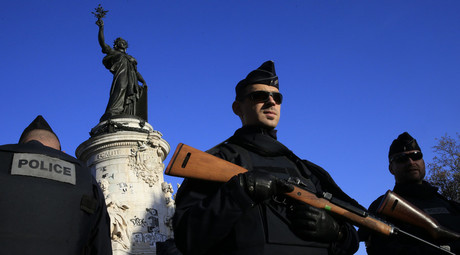 Fortress Britain? EU open borders policy under threat after Paris terror attacks
Fortress Britain? EU open borders policy under threat after Paris terror attacks
In a speech made in Rome on Thursday, Hammond warned that Prime Minister David Cameron had to secure a
“tangible outcome” on migration as part of a renegotiation deal with the EU.
Cameron has said he will hold a nation-wide referendum before the end of 2017 after renegotiating Britain’s relationship with the bloc. He has previously said it is
“crucial” that immigration laws are reformed.
In the speech, Hammond said many Brits are in favor of a Brexit because Europe is being overwhelmed by “
what appears to many people to be an uncontrollable wave of immigration.”
“Since the migration crisis began earlier this summer, the poll numbers have changed and the most recent poll showed that by a small margin a majority are now in favor of leaving the EU. This reflects the effect of the migration crisis and fear of the future and fear that Europe is losing control of the situation,” he added.
But the issue of immigration has divided the Conservative Party, with one anonymous MP saying he is in favour of the free movement of people and labor.
“I support the free market, and freedom of movement is part of that. We should, as a party, be relaxed about mass migration – it’s a fact of modern life,” they said.
Immigration minister James Brokenshire said immigrants are responsible for ousting Brits from jobs in the UK.
“Too many British employers are still overly reliant on foreign workers,” he said.
“In the past it has been too easy for some businesses to bring in workers from overseas rather than to take the decision to train our workforce here at home.”
http://www.migrationpolicy.org/article/united-kingdom-reluctant-country-immigration/










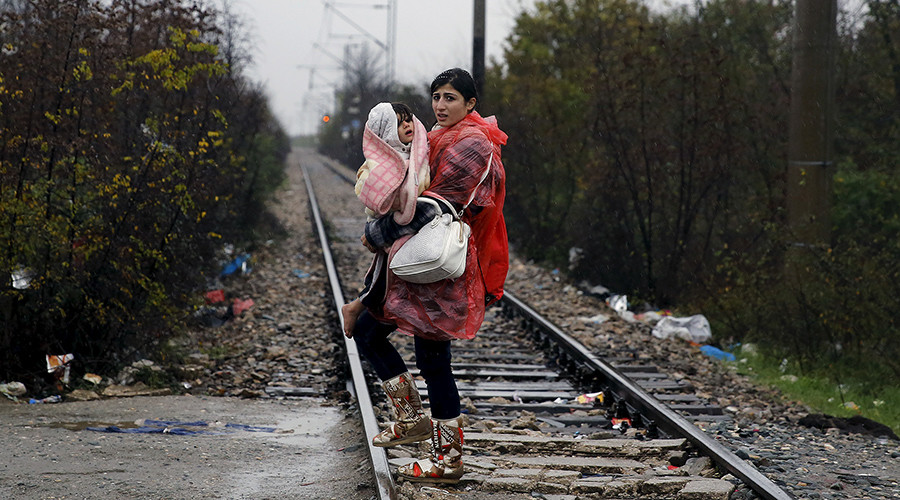
 Fortress Britain? EU open borders policy under threat after Paris terror attacks
Fortress Britain? EU open borders policy under threat after Paris terror attacks 


